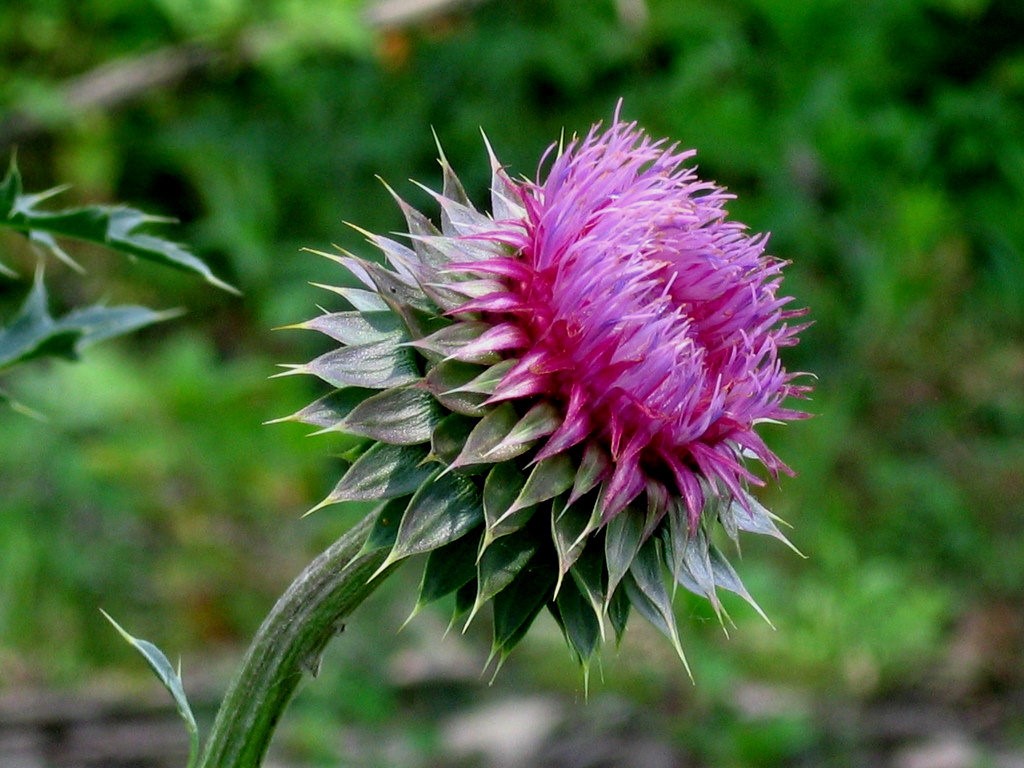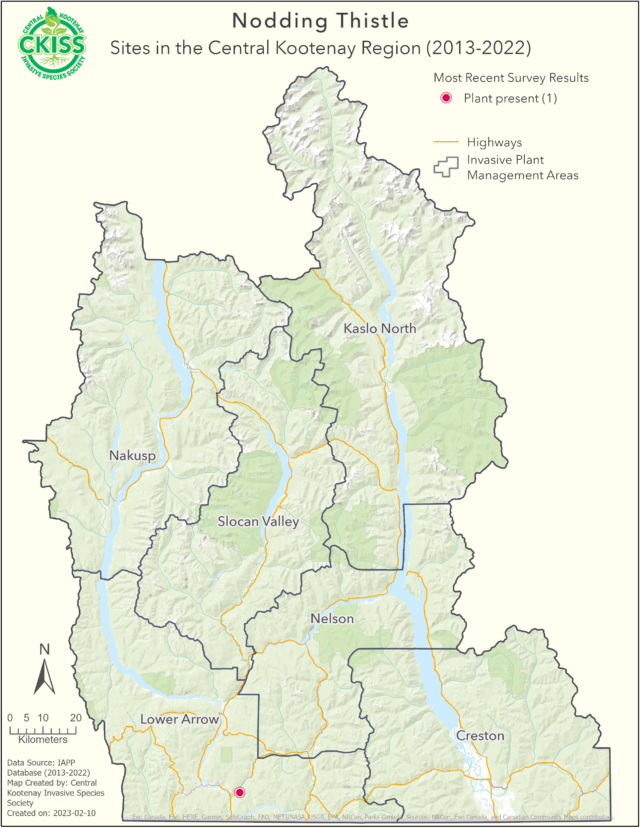Carduus nutans
Description
- Solitary flowers at the end of a 20 cm – 2.5 m tall stem
- Alternate leaves, waxy cuticle
- Flowers are purple-red with spiny bracts surrounding the flower.
- Called ‘nodding thistle’ because the flowers droop down as they mature.
Introduction and spread
- Native to Europe
- A nodding thistle plant may produce up to 20,000 seeds
- Seeds can be transported to new areas via vehicles, equipment, or clothing
- Prefers to establish on disturbed sites.
Consequences of invasion
- A problem in grasslands where grazing animals favor grasses over the thistle, giving it a growth advantage
- Outcompetes native grasses
- Creates impenetrable thickets
Status in the CKISS region
- Nodding thistle is currently classified as Prevent on the CKISS Annual Priority List.
- It has only been found in the Lower Arrow Invasive Plant Management Area of our region.
- Measures are being taken to eradicate this species where it is found, and to prevent further spread into new sites.
- Please report any findings of this species immediately.
- To learn more about how CKISS classifies and manages invasive species, see our Invasive Species Priority Lists page.
Integrated pest management options
Prevention
- Be PlantWise! Choose only non-invasive plants for your garden.
- Learn to properly identify nodding thistle
- Clean equipment and gear before leaving an infested site
Treatment
- Hand digging and mowing can be effective if repeated over a period of time
- Mow just before plants flower to reduce seed production.
- Transport securely and dispose of removed invasive species properly at a landfill


